Egypt’s Nile River Cruise is a time-honored way of exploring Egypt and offers a unique opportunity to experience the country’s rich history and culture. Embarking on Nile River cruises in Egypt are a once-in-a-lifetime experience. Here are 12 highlights to look forward to on your journey.
Contents
1. Karnak Temple
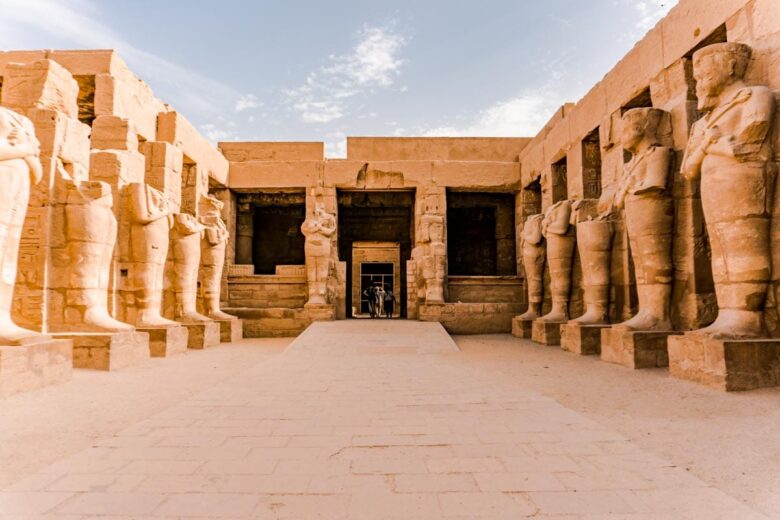
Source: thediscoveriesof.com
Firstly, the ancient temples of Egypt are a marvel to behold. The Karnak Temple, Luxor Temple, and the Temple of Abu Simbel are just a few of the awe-inspiring temples that visitors can explore. These temples are a testament to the immense power and wealth of the pharaohs who built them, and their intricate carvings and hieroglyphics reveal a wealth of information about ancient Egyptian culture.
2. Valley of the Kings
Secondly, the Valley of the Kings is a must-see destination. This is where the tombs of pharaohs and powerful nobles were hidden for centuries, and visitors can explore the underground tombs and marvel at the elaborate decorations and artifacts that have been preserved for thousands of years. This is a truly humbling experience, as it provides a glimpse into the lives of the ancient Egyptians and their beliefs about the afterlife.
3. Luxor Temple
Thirdly, the Luxor Temple is a large Ancient Egyptian temple complex located on the east bank of the Nile River in Luxor. The temple was built during the New Kingdom period and was dedicated to the god Amun. The temple has a large courtyard, a hypostyle hall, and several smaller chambers. The temple also has several obelisks and statues that were added by various pharaohs over the years. The temple is one of the most impressive ancient Egyptian temples and is a must-visit attraction for anyone visiting Luxor.
4. Philae Temple
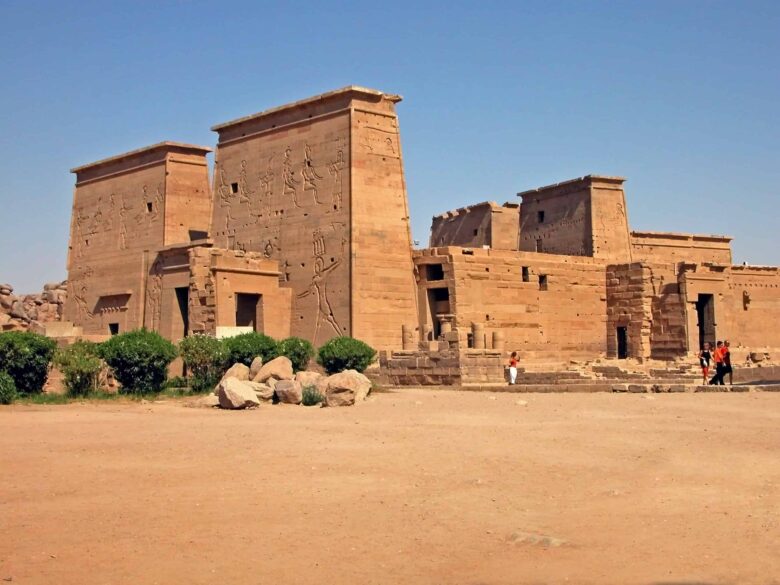
Source: odysseytraveller.com
Fourthly, Philae Temple is an ancient Egyptian temple complex that is located on an island in the Nile River. The temple was built during the Ptolemaic dynasty and was dedicated to the goddess Isis. The temple complex consists of several buildings and structures including the main temple, a small temple dedicated to Hathor, and several other buildings. The temple complex was relocated to its current location on Agilkia Island in the 1960s due to the construction of the Aswan High Dam. The temple complex is one of the most impressive ancient Egyptian temples and is a must-visit attraction for anyone visiting Aswan.
5. Nubian Village
Fifthly, a visit to a Nubian village provides an opportunity to learn about this unique culture and their traditions. The Nubians have lived along the Nile for thousands of years, and they have a rich history and culture that is distinct from the rest of Egypt. Visitors can learn about Nubian customs, cuisine, and art, and gain insight into this fascinating culture.
6. Kom Ombo Temple
Sixthly, the Kom Ombo temple is an unusual double temple that was built during the Ptolemaic dynasty. The temple is dedicated to two gods – Sobek and Horus. Sobek was the crocodile god and Horus was the falcon-headed god. The temple has two entrances, two hypostyle halls, and two sanctuaries. The temple also has a small museum that displays artifacts from the temple and the surrounding area.
7. Edfu Temple
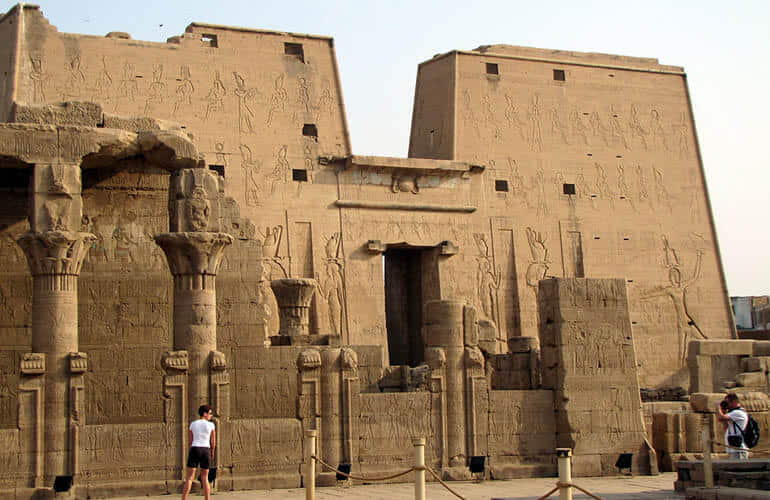
Source: cleopatraegypttours.com
Seventhly, Edfu Temple is an ancient Egyptian temple complex that is located in the city of Edfu. The temple was built during the Ptolemaic dynasty and was dedicated to the god Horus. The temple complex consists of several buildings and structures including the main temple, a small temple dedicated to Hathor, and several other buildings. The temple complex is one of the most impressive ancient Egyptian temples and is a must-visit attraction for anyone visiting Edfu.
8. Dendera Temple
The Dendera Temple is located in the town of Dendera, about 60 kilometers north of Luxor. It’s one of the best-preserved ancient Egyptian temples and is dedicated to the goddess Hathor, who was the goddess of love, beauty, and music. The temple was built during the Ptolemaic period, which was a time of great prosperity and cultural exchange in ancient Egypt. The temple’s design reflects the influence of Greek and Roman architecture, as well as traditional Egyptian motifs. One of the most impressive features of the temple is the hypostyle hall, which features 24 massive columns that are adorned with intricate carvings and hieroglyphics. The ceiling of the hall is painted with a stunning depiction of the zodiac, which is one of the most famous features of the temple.
9. Elephantine Island
Elephantine Island is located in the Nile near Aswan and is home to some of the oldest ruins in Egypt. Visitors can explore the island and see the ancient temples, tombs, and ruins that date back to the Old Kingdom period.
10. The Unfinished Obelisk
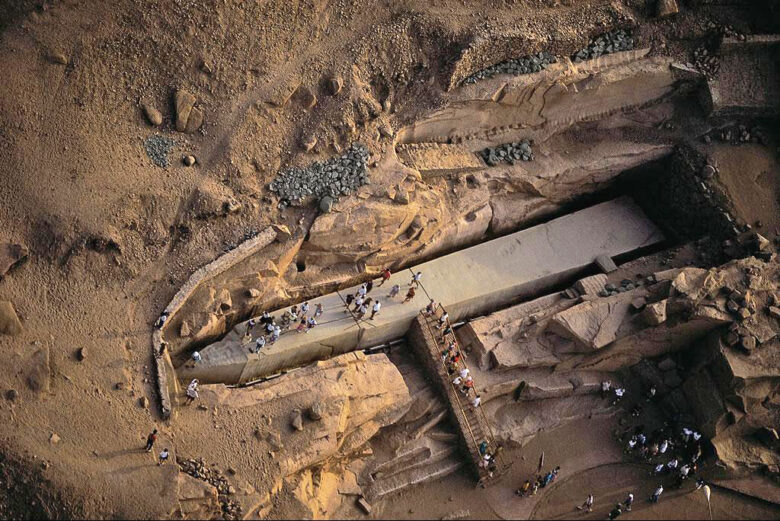
Source: egypttoursportal.com
The Unfinished Obelisk is an impressive example of ancient Egyptian stonework that’s located in Aswan. The obelisk is believed to have been ordered by the pharaoh Hatshepsut, who ruled during the 18th dynasty. The obelisk is made of red granite and is estimated to have weighed around 1,168 tons, which would have made it one of the largest obelisks ever constructed. Unfortunately, the obelisk was abandoned during construction due to a crack in the rock. Visitors to the site can see the impressive size of the unfinished obelisk, which still lies in the quarry where it was being constructed.
11. The Temple of Hatshepsut
The Temple of Hatshepsut is one of the most impressive ancient Egyptian temples and is located in Deir el-Bahri near Luxor. It’s dedicated to the pharaoh Hatshepsut, who was one of the few female pharaohs in ancient Egypt. The temple features stunning architecture and carvings that tell the story of Hatshepsut’s reign. The temple was built during the New Kingdom period and is considered one of the greatest architectural achievements of ancient Egypt. The temple is built into a cliff face, and its design reflects the natural surroundings. Visitors can see the impressive colonnades and statues that adorn the temple, including a famous depiction of Hatshepsut in the form of a sphinx.
12. The Colossi of Memnon
The Colossi of Memnon are two massive statues that stand on the west bank of the Nile near Luxor. They were built during the New Kingdom period and are believed to represent the pharaoh Amenhotep III. Visitors can see the impressive size of the statues and learn about their significance.
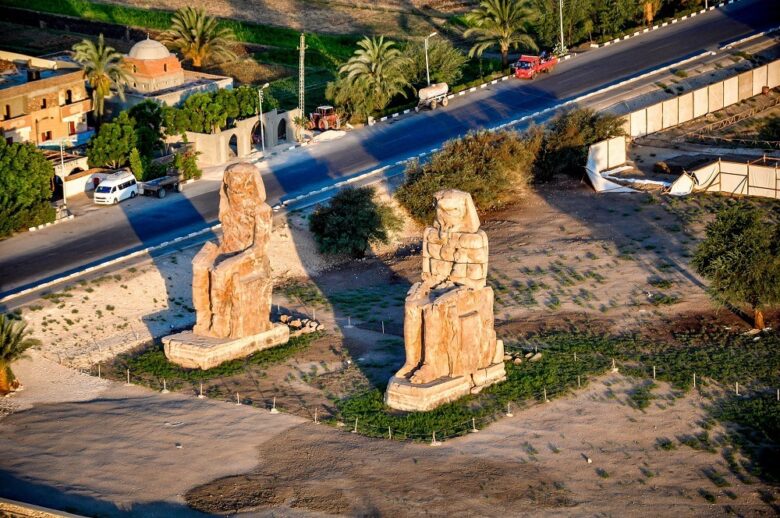
Source: amusingplanet.com
In conclusion, a Nile River cruise tour in Egypt is an unforgettable experience that offers a window into the country’s rich history and culture. It is an experience that should be on every traveler’s bucket list.
